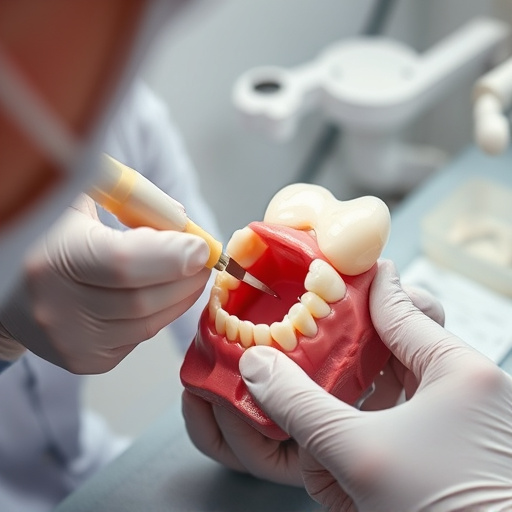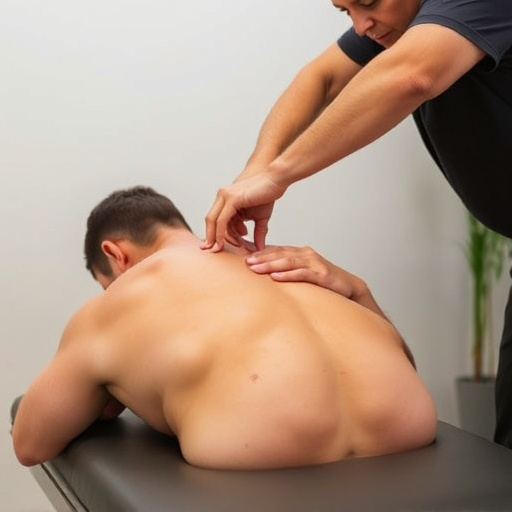Shockwave plantar fasciitis treatment offers swift relief for heel pain caused by inflamed fascia using sound waves, accelerated healing in doctors' offices. Post-treatment, physical therapy and targeted exercises manage symptoms and prevent flare-ups. Early stages show sharp or aching heel/foot pain, subsiding with movement, returning after standing or walking. Conservative measures like RICE, spinal adjustments, and shockwave therapy alleviate symptoms. Consulting a healthcare provider is crucial for effective treatment. Non-invasive options include physical therapy, ultrasound, heat/ice, massage, rest, activity modification, orthotics, and night splints before exploring more aggressive treatments.
“Before diving into the world of shockwave plantar fasciitis treatment, it’s crucial to understand the condition and its potential impact. This guide aims to equip folks with knowledge about shockwave therapy for plantar fasciitis, a non-invasive approach gaining popularity. We’ll explore common symptoms and when to seek professional help, offering insights into non-invasive care options before starting therapy. Understanding these aspects can make all the difference in your journey towards relief.”
- Understanding Shockwave Plantar Fasciitis Treatment
- Common Symptoms and When to Seek Help
- Non-Invasive Care Options Before Starting Therapy
Understanding Shockwave Plantar Fasciitis Treatment

Shockwave plantar fasciitis treatment involves a non-invasive approach to alleviate heel pain caused by inflammation of the plantar fascia. This method uses concentrated sound waves, known as shockwaves, to stimulate healing in the affected area. The process is relatively quick and can be performed in a doctor’s office or clinic.
Physical therapy plays a crucial role in post-treatment care, helping patients manage their symptoms and prevent future flare-ups. Exercises focused on strengthening foot muscles and improving flexibility can significantly aid in recovery. For individuals who have experienced a car accident injury or other trauma leading to shockwave plantar fasciitis, dedicated car accident injury care and post-accident rehabilitation programs can be tailored to address specific needs, ensuring a comprehensive path to healing and restored mobility.
Common Symptoms and When to Seek Help

The onset of shockwave plantar fasciitis can be a painful experience, often marked by several telltale signs. One of the most common symptoms is a sharp or aching pain in the heel and arch of the foot, typically worst first thing in the morning or after periods of inactivity. This pain may lessen with gentle movement but can return after prolonged standing or walking. Individuals experiencing these symptoms should pay close attention to their bodies and consider seeking help from healthcare professionals if the discomfort persists for more than a few weeks.
Prolonged soft tissue injuries like plantar fasciitis may require prompt intervention to prevent further damage. While some cases can be managed through conservative measures such as rest, ice, compression, and elevation (RICE), others might benefit from non-invasive treatments including spinal adjustments or shockwave therapy. Timely consultation with a healthcare provider is crucial to determine the best course of action and ensure effective relief from symptoms.
Non-Invasive Care Options Before Starting Therapy

Before embarking on shockwave plantar fasciitis therapy, exploring non-invasive care options can be a game-changer for managing this condition. Physical therapy plays a crucial role in treating plantar fasciitis by focusing on exercises to strengthen and stretch the foot and ankle muscles, improving flexibility, and reducing pain. Techniques like ultrasound, heat or ice therapy, and massage may also be employed as part of this approach.
In addition to physical therapy, other non-invasive strategies can help alleviate symptoms associated with shockwave plantar fasciitis. For instance, rest and modification of activities that aggravate the condition can provide significant relief. Using orthotic inserts in shoes or night splints for the feet can also support the arch and reduce morning pain. These conservative measures aim to promote healing and prevent further damage before considering more aggressive treatments, ensuring a comprehensive approach to managing shockwave plantar fasciitis.
Shockwave plantar fasciitis is a condition that requires early intervention for effective management. By understanding the symptoms, exploring non-invasive care options, and seeking professional guidance, individuals can proactively address this issue before it intensifies. Remember, timely action is key to minimizing pain and promoting healing through treatments like shockwave therapy.














